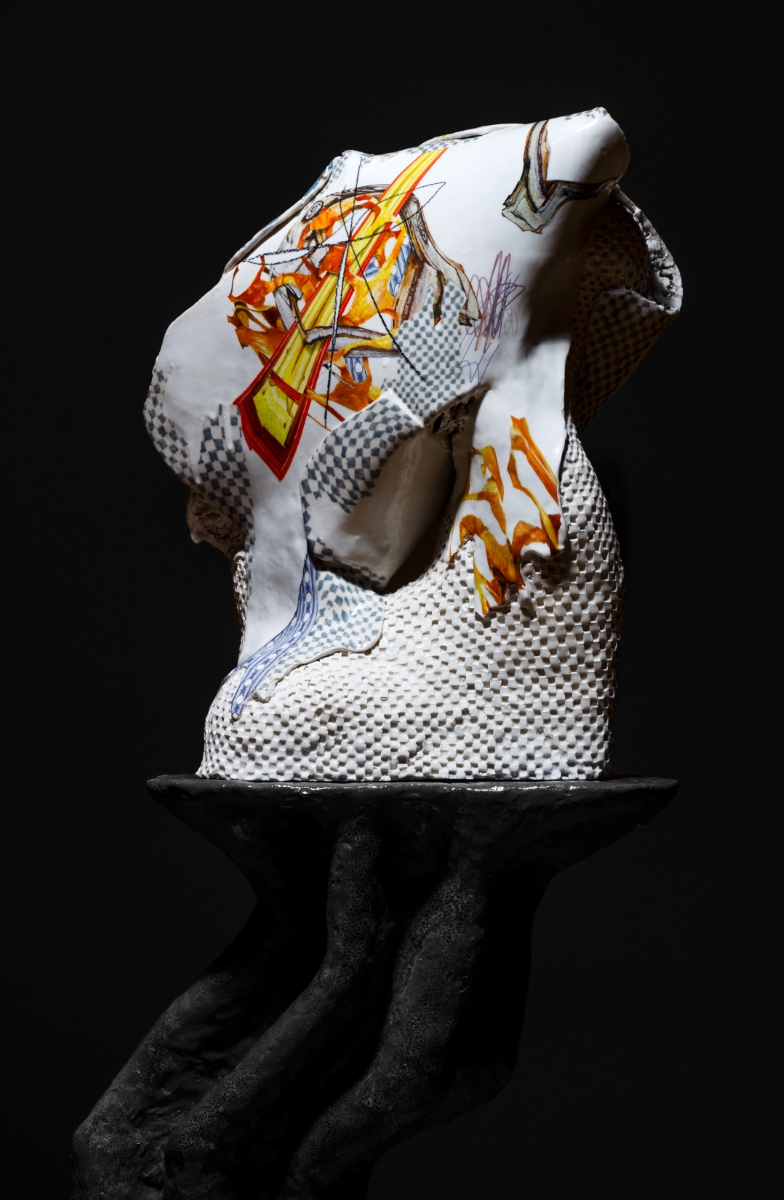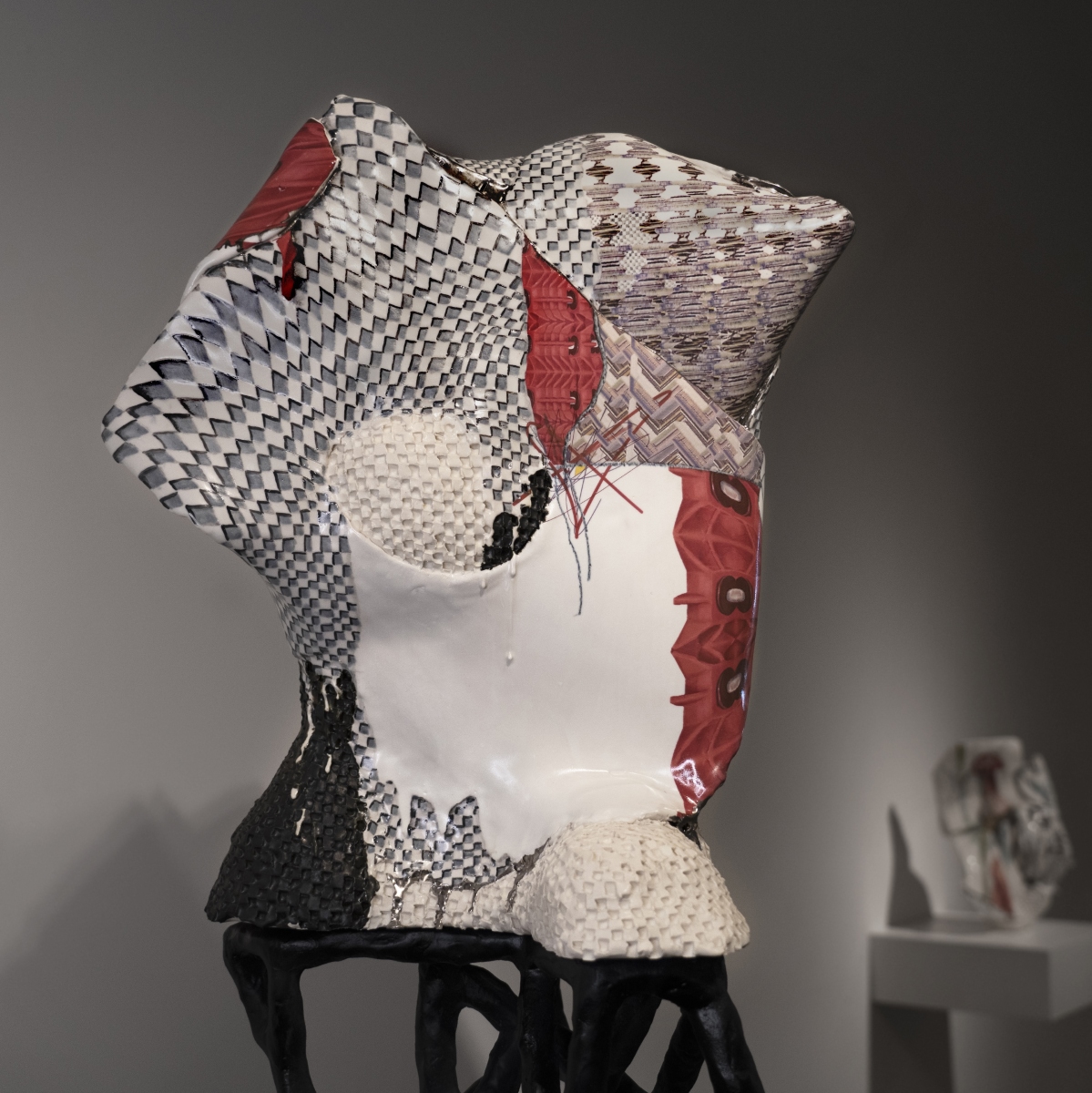Known for incorporating the “glitch” aesthetic into the ceramic vernacular, Darien Arikoski-Johnson’s work addresses thoughts of memory, technological integration, mark-making, and perceptual consciousness. While his original draw to the ceramic medium was the physical nature in which it is manipulated, during Graduate school at Arizona State University, he found clay to be a relevant medium to explore the relationship of illusion and form, thought and physicality.
Arikoski-Johnson has continued the exploration of these ideas and processes through multiple relocations, including time spent as a visiting artist at the College of Creative Studies in Detroit and an Assistant Professor at Buffalo State College. In 2016 he transitioned from being a full-time artist residing in Copenhagen, Denmark, to taking a position at Georgia State University where he is currently an Associate Professor of Art.
Arikoski-Johnson’s work has been recognized nationally and internationally through awarded grants, exhibitions, and residencies. In 2012 he was awarded the Emerging Artist Award through NCECA, he has received multiple grants including one from the Danish Cultural Ministry to complete a residency and exhibition opportunity through C.R.E.T.A. Rome. A-Johnson’s work was awarded the Gold Prize in the Korean International Ceramics Biennale 2021 and in 2023 his work is shown in the 62nd Faenza Prize – International Competition of Contemporary Art Ceramics.
Visit Darien Arikoski-Johnson’s website and Instagram page.
Featured work
Selected works, 2019-2023


My work represents the current entanglement of human cognition and digital processing. The recent proliferation of the camera‐phone enables us to record spontaneously. Experience is interrupted to capture and store moments. The recordings are used for recollection; however, over time our reliance on the two‐dimensional image to replace perceptual experience flattens and fragments the memory. By dissecting and altering these fragments, my work raises awareness of a continually altered state of visual consciousness. It makes reference to a shift in contemporary experience relating to the cognitive processing of sight.














